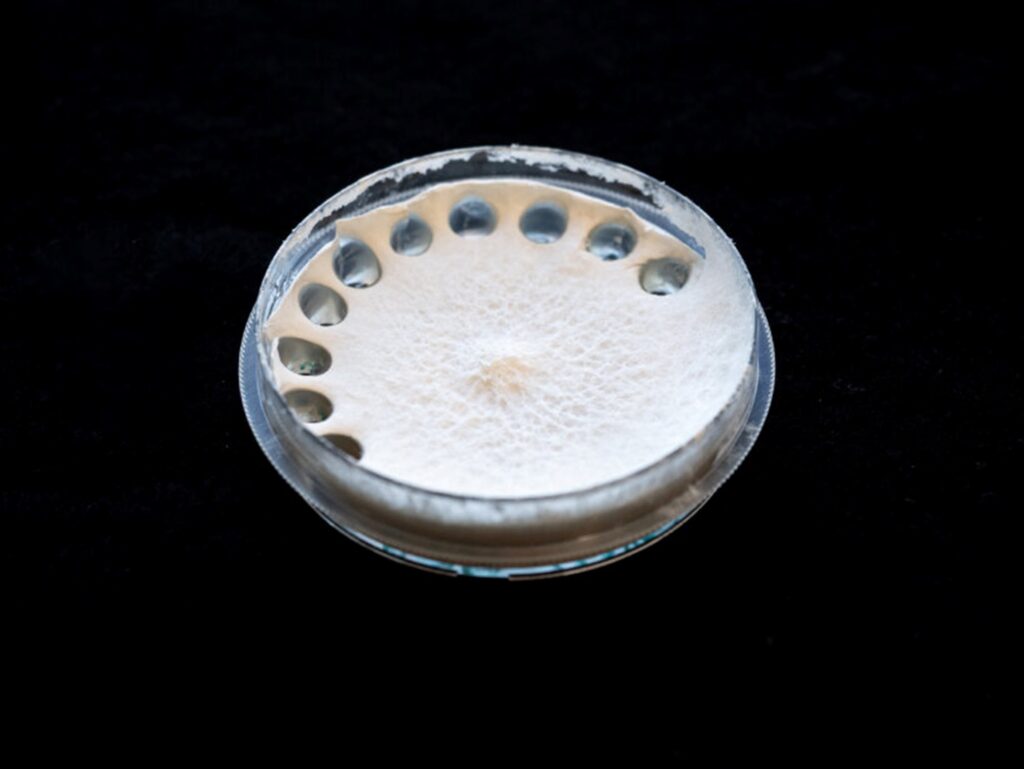
Researchers at EMPA (Swiss Federal Laboratories for Materials Science and Technology) have created a living biodegradable material made from fungi that can allow trash bags to decompose organic waste. It is one of the many potential applications of the studied fungi.
In the field of electronics, the living biodegradable material made from fungi can be used to produce sensors, as well as bio- and paper batteries, because the split-gill mushroom used reacts to moisture and its surroundings. Also, it is a “biodegrader,” meaning that its properties can actively decompose wood and other plant materials.
The split-gill mushroom is an edible fungus that grows on dead wood. In the Empa study, the team used the entire living mycelium as it is, including the “extracellular matrix,” which contains a natural mix of proteins and fibers that the fungus creates as it grows. Then, they choose a specific strain from the finger to make two molecules.

The first is schizophyllan, which lets them produce a strong and thin fiber; the next is hydrophobin, which is a protein that behaves like soap and interacts well with water and oil. These two make the living biodegradable material made from fungi robust, flexible and adaptable, creating a component that’s ideal for biodegradable and natural products.
The researchers have tried out two applications in their lab: a plastic-like film, and an emulsion. The latter is what helps create the schizophyllan fibers and hydrophobins, even producing more of the molecules over time, which the team describes as a rare occurrence. For the former, the scientists have turned the living biodegradable material made from fungi into a thin film.

They’ve discovered in their study that the resulting object is strong and flexible, due to the extracellular matrix and the long schizophyllan fibers. The team adds that they could make it significantly stronger when they align the fungal fibers in the same direction, a similar technique as weaving layering threads in fabric. The researchers imagine using the material to produce plastic bags that can compost waste, or other compostable objects for packaging. It behaves like plastic, but is even safe to eat.
The Empa researchers now look into combining traditional fiber material science with the new field of living materials, ones that can grow, adapt, or heal themselves. Because the mycelium is alive, they can also control its properties by adjusting how it is grown (temperature, humidity, nutrients) opening the path to alternative materials.
SOURCE: EMPA, via designboom.com
 TEXTILES.ORG
TEXTILES.ORG


